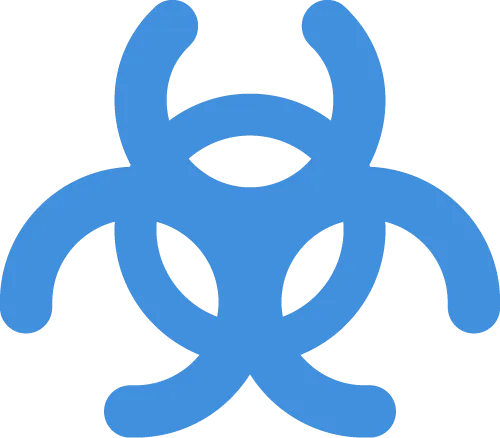
Mpox Vaccination in Africa: The Urgent Steps Ahead for the Democratic Republic of the Congo
2024-10-01
Mpox Vaccination in Africa: The Urgent Steps Ahead for the Democratic Republic of the Congo
The alarming rise of mpox cases in Africa, particularly in nations that had previously remained untouched by the virus, has ignited a strong demand for increased resources and coordinated action. Fortunately, the pleas for greater vaccine accessibility—an essential tool in stemming the tide of the outbreak—are finally being met.
Recently, several governments, including the United States, Japan, and various European nations, have committed substantial donations of vaccines to African countries. The World Health Organization’s prequalification of Bavarian Nordic’s vaccine marks a crucial advancement, enabling international funders to purchase the much-needed doses. Following this, Gavi, the Vaccine Alliance, has pledged to procure 500,000 doses using funds from their new First Response Fund, thereby amplifying global vaccination efforts.
However, obtaining vaccines is merely the starting point; it’s necessary yet far from sufficient to avert further outbreaks and safeguard the most at-risk communities. This situation necessitates a focused strategy concentrated on three main priorities: identifying priority vaccination groups, fortifying the distribution framework, and cultivating public trust to ensure that vaccinations reach those most affected.
Prioritizing High-Risk Populations
With vaccine donations lining up for Africa, national leaders face the critical task of determining equitable allocation across various demographics. Is the aim to contain outbreaks that might spread from the Democratic Republic of the Congo (DRC) into neighboring nations like Uganda and Rwanda? Or is there a need to focus more on reducing the disease's extensive impact in high-risk provincial areas within DRC?
Most of the attention has gravitated toward the subclade Ib strain, which has transcended borders, unlike the more pervasive subclade Ia, primarily found in DRC. The latter, characterized by animal-to-human transmission, has led to numerous cases and fatalities in the country’s rural and impoverished areas, often overlooked in global discussions. To combat the highest incidence of mpox, it is imperative to prioritize healthcare workers, individuals with compromised immune systems, and marginalized communities located in endemic zones.
Enhancing Vaccination Distribution Systems
Charting a successful course for vaccination requires not only recognizing priority groups but also guaranteeing that the vaccines are delivered effectively. Previous experiences, particularly those drawn from the COVID pandemic, have highlighted the importance of readiness and the last mile delivery process.
Vaccination coverage in DRC has continually faced challenges, with basic vaccines like the measles vaccine often struggling to reach even 70 percent coverage in several regions. Thus, it is essential to strengthen the entire immunization delivery system—covering human resources, proper storage, and efficient transportation. While this undertaking demands time and resources, without deliberate investment, vaccines will be ineffective in the absence of a capable distribution structure.
Additionally, bolstering these systems could enable fractional dosing, thereby extending limited vaccine resources further. This method becomes feasible as the delivery infrastructure improves, thus reaching a broader population.
Building Trust and Community Engagement
The lessons learned from past health crises underscore the importance of dismantling stigma and fostering trust within communities. Marginalizing those at risk often leads to fear, discrimination, and ultimately, delays in seeking necessary healthcare services—issues previously witnessed during the Ebola and HIV crises. The hesitance shown by health care workers during the COVID-19 vaccination rollout in Africa illustrates the critical role of trust in vaccination campaigns.
To mitigate stigma, it's crucial to promote inclusive messages that emphasize the health risks associated with mpox rather than labeling specific groups. Public health campaigns should clarify that the virus can impact anyone, shifting the discourse away from reinforcing harmful stereotypes.
Addressing vaccine hesitancy entails public health officials actively engaging with communities and acknowledging their concerns. Offering clear, culturally sensitive information about the vaccine’s safety and benefits is vital. Consultation with local communities from the onset, moving beyond mere information dissemination to partnership in disease prevention strategies, is essential for reinforcing community support and managing disease spread.
Conclusion
The donation of mpox vaccines to African nations marks a vital first step in combating this health crisis. Still, it is a call-to-action for ongoing efforts to ensure effective and fair utilization of these vaccines. By focusing on targeted vaccination strategies, strengthening delivery systems, and engaging communities in trust-building initiatives, we can empower African communities and shield them from future outbreaks of mpox and other infectious diseases.



 Brasil (PT)
Brasil (PT)
 Canada (EN)
Canada (EN)
 Chile (ES)
Chile (ES)
 España (ES)
España (ES)
 France (FR)
France (FR)
 Hong Kong (EN)
Hong Kong (EN)
 Italia (IT)
Italia (IT)
 日本 (JA)
日本 (JA)
 Magyarország (HU)
Magyarország (HU)
 Norge (NO)
Norge (NO)
 Polska (PL)
Polska (PL)
 Schweiz (DE)
Schweiz (DE)
 Singapore (EN)
Singapore (EN)
 Sverige (SV)
Sverige (SV)
 Suomi (FI)
Suomi (FI)
 Türkiye (TR)
Türkiye (TR)